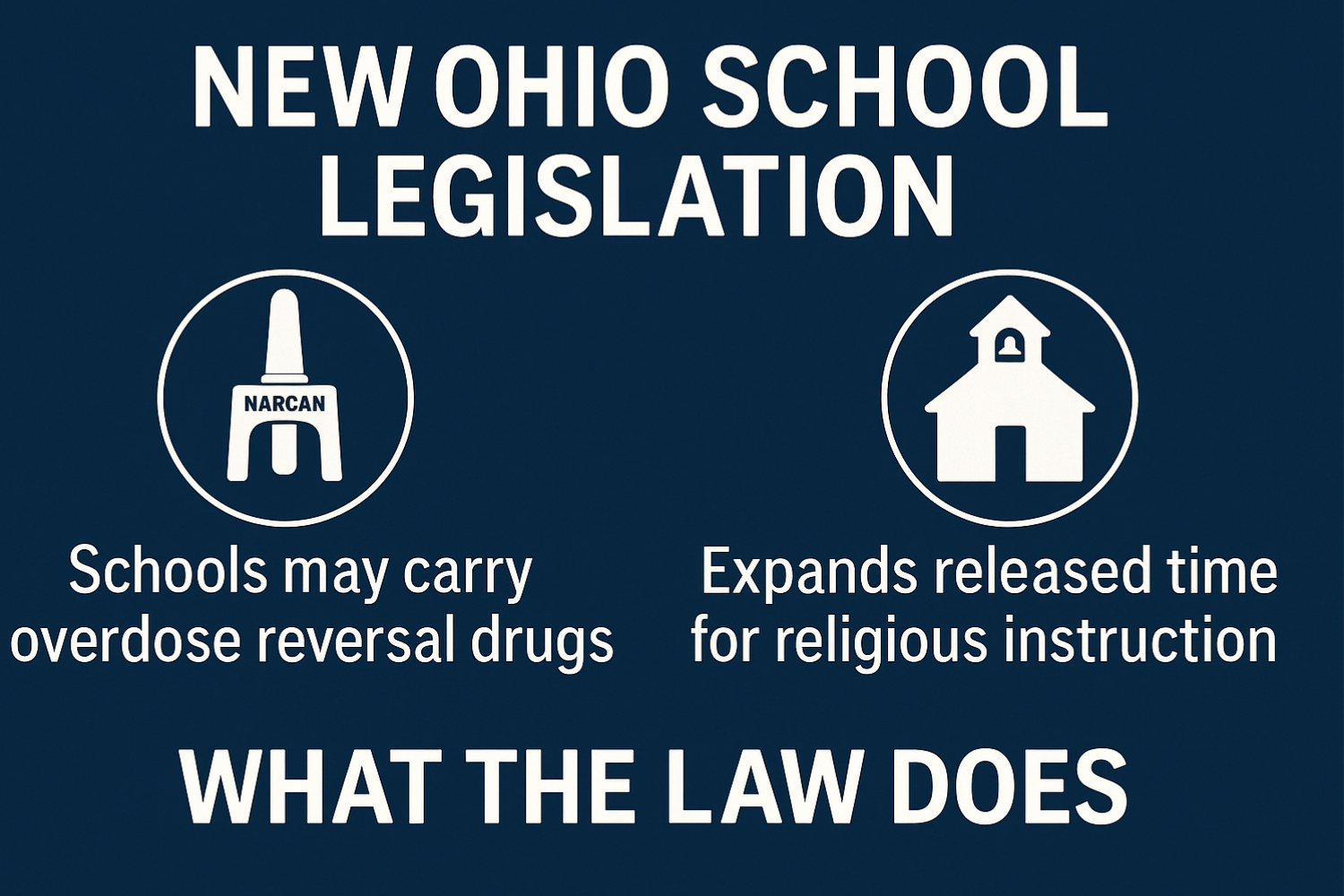Columbus — Ohio’s public and private schools are now legally permitted to keep and administer overdose-reversal medications such as naloxone, commonly known by the brand name Narcan. Governor Mike DeWine signed the change into law under House Bill 57, which also expands how much time students may be excused from class for off-campus religious instruction.
Under the legislation, schools that choose to maintain a supply of naloxone must adopt a formal policy outlining how and where the medication is stored, who is trained to use it, and how incidents are reported. Schools must notify parents or guardians if the medication is ever administered and report each case to the Ohio Department of Education and Workforce.
Districts may also accept donations or use existing health and safety funds to purchase the medication and provide staff training. The measure does not require schools to carry naloxone, but it gives those that choose to do so a clear legal framework and liability protection.
State lawmakers said the change was prompted by the rise in accidental overdoses involving synthetic opioids such as fentanyl, which have increasingly affected teenagers across Ohio. Supporters compared the step to other life-saving resources already permitted in schools, such as automated external defibrillators and epinephrine injectors.
What This Means for Local Schools
Most Ohio districts already have policies in place regarding released-time religious instruction following an earlier state mandate, but the authority to carry naloxone is new. School boards will now decide whether to participate, how much medication to keep, and how to train staff for emergency response.
The Ohio Department of Education and Workforce is expected to issue model policy guidance before the 2026 school year, and implementation timelines may vary by district. Schools that adopt the policy will be required to follow specific storage and reporting procedures once the law takes effect.
For families, the presence of naloxone on campus is considered a precautionary measure rather than an indication of increased risk. Parents interested in their district’s plans can contact their local school board or health coordinator for updates.

